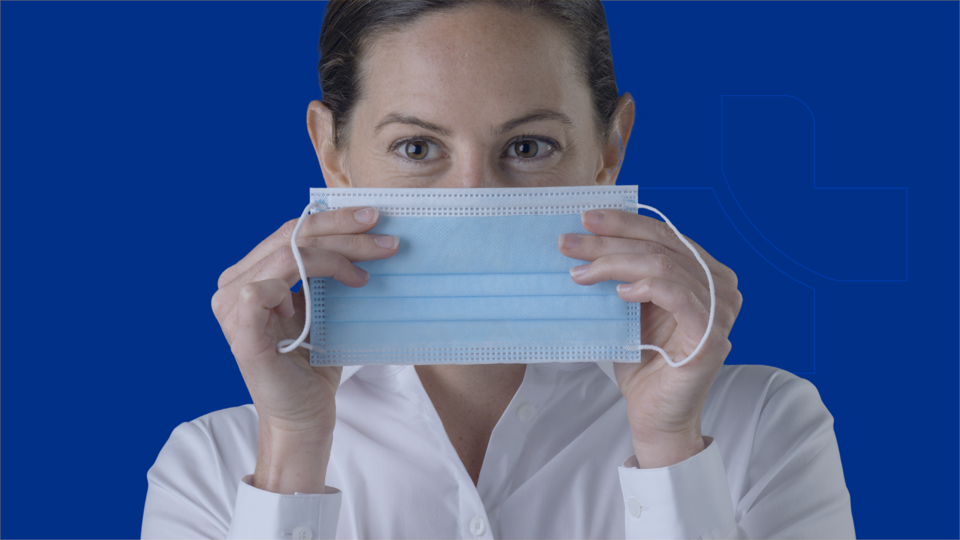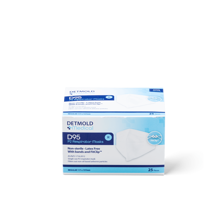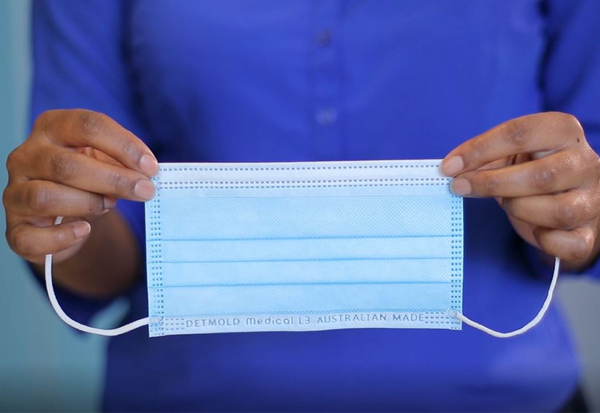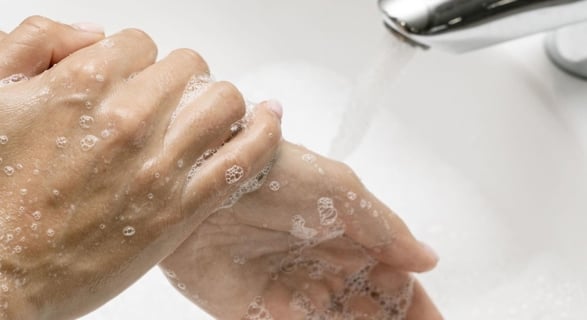Face masks and respirators are designed to protect wearers against airborne viruses and pathogens, but only when worn correctly. However, many people still misuse them, leaving themselves exposed to airborne viruses and pathogens.
At Detmold Medical, we’re committed to producing high-quality personal protective equipment (PPE) while ensuring you get the most out of your respiratory protection. So, to help you stay protected, we’ve compiled a few Detmold face mask tips.
Do’s – Best practices when wearing masks and respirators
From how to wear a face mask properly to the correct face mask hygiene, here’s everything you should do when wearing a face mask or respirator.
Do wash or sanitise your hands before and after touching the mask
Regardless of whether you’re donning or doffing your face mask or respirator, it’s essential to ensure that you practice good hand hygiene before and after handling your mask. This helps to prevent contaminating a clean mask and minimises the chance of potentially transferring germs after taking your mask off.
Do check for a snug fit around the nose and chin
Whether it's a face mask or respirator, a proper fit is key. Masks should cover your nose and mouth with minimal gaps, while respirators need a sealed fit and should be fit tested to ensure full protection.
Do store your mask in a clean, breathable container when not in use
Store your mask in a clean, breathable container away from sunlight and extreme temperatures to prevent damage or contamination. Check the packaging for storage guidelines and always confirm the expiry date before use.
Do replace disposable masks after one use
As the name suggests, single-use face masks should only be used once. The Australian Government recommends changing disposable masks every four hours or when they become damaged, wet or soiled.
Do follow manufacturer instructions for respirators like N95s or P2s
Respirator masks, like N95 or P2 respirators, offer snug facial fits to provide adequate protection. With this in mind, it’s essential to follow manufacturer's instructions to ensure correct use.
Do perform a seal check when using a respirator
Following on from the point above, it’s important to make sure you do a seal check each time you put on a respirator mask. This allows you to check that your mask fits snugly against your face with no gaps for hazardous particles to pass through. For example, if you’ve recently grown facial hair, there’s a chance your usual respirator might not fit properly, reducing its effectiveness.
Do learn the difference between surgical masks and respirators
While surgical face masks and respirator masks both offer protection against airborne viruses and pathogens, there are several key differences that set them apart. Level 3 surgical face masks protect the wearer against splashes and sprays (sneezes and coughs) from other people, while also offering source control benefits by preventing droplets of bodily fluids from escaping via the nose and mouth.
Respirator masks are designed to filter out non-oil-based airborne particles.
Do consider wearing a mask even in low-risk situations if symptomatic
By wearing a face mask that offers source control capabilities, like a surgical respirator mask, you’ll be able to minimise the spread of viruses, germs and illnesses that would otherwise potentially infect those around you.
Our Best Sellers

Don’ts – Common mistakes to avoid
Make sure to avoid these common face mask mistakes to reduce the risk of potential exposure to hazardous particles.
Don’t touch the front of the mask while wearing it
Touching the front of your mask increases the risk of contamination. The front area is the most exposed to airborne particles, so by touching it with your hands, you’re more likely to transfer contaminants to other areas via your hands.
Don’t wear the same disposable mask for days
Disposable face masks are designed to be worn for a maximum of four hours or until they become wet, soiled or damaged before, whichever comes first. Worn face masks don’t offer the same level of protection, increasing the risk of contamination. Plus, wearing a wet or soiled mask can also impact the breathability.
Don’t wear your mask under your nose or chin
By wearing your mask under your nose or chin, you leave yourself exposed to potential pathogens. The same logic applies to hanging your mask from your ear or around your neck. This stretch the ear loops or headbands, impacting the fit and increasing the risk of exposure.
Don’t share masks with others
Not only is mask sharing unhygienic, but it also increases the risk of potential contamination.
Don’t assume all masks are TGA-approved
Face masks and respirators that are intended for use in medical settings to prevent the transmission of diseases must be approved by the Therapeutic Goods Administration (TGA) and listed on the Australian Register of Therapeutic Goods (ARTG). TGA-certified masks and respirators will display the TGA logo, label and ARTG identifier numbers on the packaging.
Stay safe with Detmold Medical
At Detmold Medical, we’re committed to producing high-quality, Australian made face masks and respirators. Explore the range or use our selection guide to help you find the best mask or respirator for your needs.








